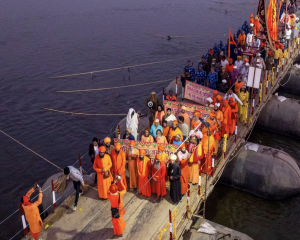The Ganges River in India is awash with brilliant color as millions of Hindu pilgrims dressed in tangerine, fuchsia, and watermelon wade into the green waters, dropping marigolds in their wake as a sign of devotion.

During much of the year, this piece of land is inaccessible, submerged by the floods of monsoon season, which lasts from June to September.











